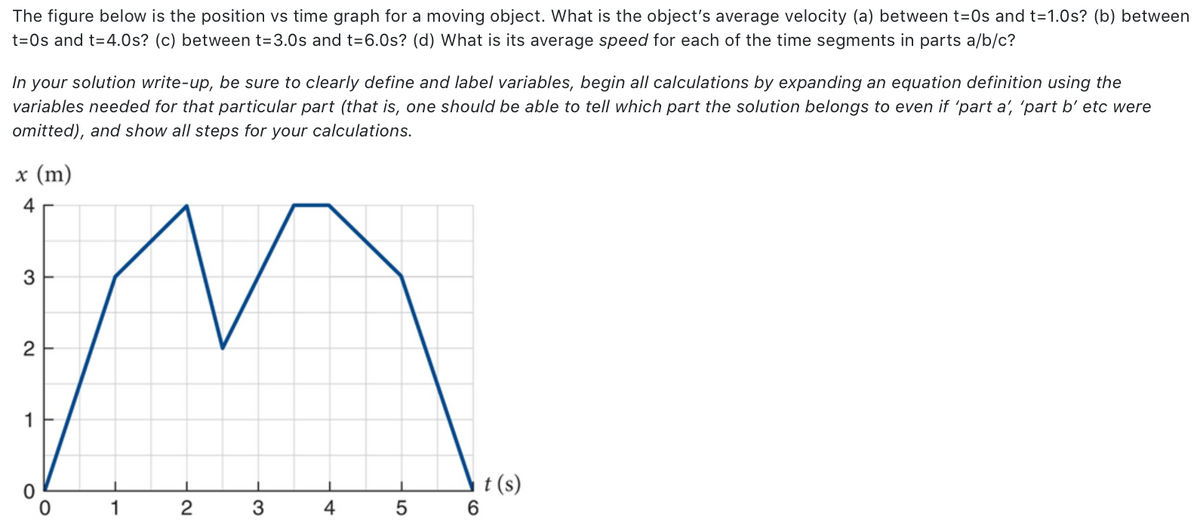The figure below is the position vs time graph for a moving object. What is the object's average velocity (a) between t=0s and t=1.0s? (b) betweer t=Os and t=4.0s? (c) between t=3.0s and t=6.0s? (d) What is its average speed for each of the time segments in parts a/b/c? In your solution write-up, be sure to clearly define and label variables, begin all calculations by expanding an equation definition using the variables needed for that particular part (that is, one should be able to tell which part the solution belongs to even if 'part a', 'part b' etc were omitted), and show all steps for your calculations. x (m) 4 3 1 t (s) 6. 1 2 3 4 5
Gravitational force
In nature, every object is attracted by every other object. This phenomenon is called gravity. The force associated with gravity is called gravitational force. The gravitational force is the weakest force that exists in nature. The gravitational force is always attractive.
Acceleration Due to Gravity
In fundamental physics, gravity or gravitational force is the universal attractive force acting between all the matters that exist or exhibit. It is the weakest known force. Therefore no internal changes in an object occurs due to this force. On the other hand, it has control over the trajectories of bodies in the solar system and in the universe due to its vast scope and universal action. The free fall of objects on Earth and the motions of celestial bodies, according to Newton, are both determined by the same force. It was Newton who put forward that the moon is held by a strong attractive force exerted by the Earth which makes it revolve in a straight line. He was sure that this force is similar to the downward force which Earth exerts on all the objects on it.
Just part (d) please.

Step by step
Solved in 4 steps


